Farm Life Journal - December 2019
December 23, 2019
By Tom Oswald
It’s the Most Wonderful Time of the Year
“It’s the Most Wonderful Time of the Year” is certainly a great holiday song that can really stick in your head. It helped me to crack through the writer’s block I’ve been having in trying to put a wrap on my year with the Farm Life Journal.
Doing a little background check on the song, I found that Iowa-born singer Andy Williams is listed as the first to release it in 1963 with a dozen or more other performers releasing their own versions in the decades since. I hope all those following my family and farming calendar year are finding some wonderful times as we close out 2019. Merry Christmas, Happy New Year, and hopefully, a wonderful decade ahead to all!
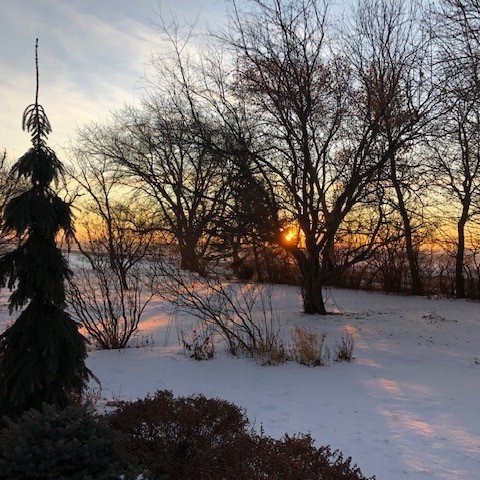
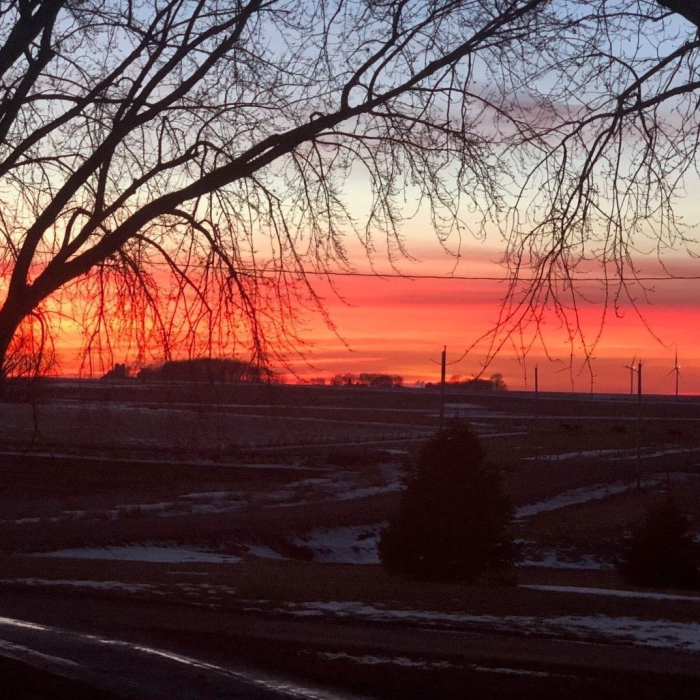
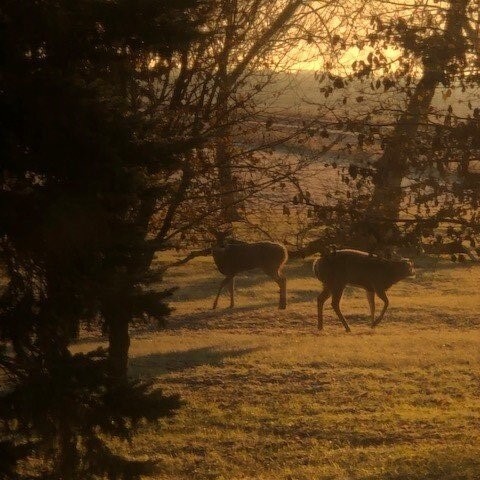
My writer’s block has been driven in part by what seems like hammer down, full-speed advancement in the days since Thanksgiving. Susanne and I hosted Thanksgiving for my family at our house. It wasn’t the same with Mom gone, but we had a great get-together. My sister from Colorado was home, and my sister from Cherokee and her husband came. Dad seemed to enjoy things better than expected since he still misses Mom. My brother Jim and his family were with some of his wife’s family. It was a white Thanksgiving. Not often do we need to move snow before Thanksgiving, but the drifts in the drive would not have been passable. I guess the “gifts” of 2019 weather just keep on giving.
As with other farm and fieldwork this year, I was able to squeeze in the last of my strip-till fieldwork just 20 hours before the pre-Thanksgiving snow. You might remember this past spring I had to do my strip-till fertilizer injection in April ahead of corn planting. The “normal” practice is for this to be done after harvest in the fall once the soil temperatures have cooled below 50 degrees F. The reason is anhydrous ammonia fertilizer (NH3) is a nitrogen source and is quite stable in the soil once the biological activity has nearly ceased due to cold soil temperature. Though, biological activity in soil never completely ceases because it’s so diverse.
The recommendation is to watch soil temperature with an expectation that it will continue to drop. Often, in northern Iowa, that means don’t apply fertilizer until after the first of November. This wasn’t an issue this year because the ground had frozen and had to thaw before I could run the equipment through the field. Frozen soil can really do a number on ground-engaging equipment.
In years when the crop comes off quickly and the soil conditions are ripe for application, fertilizer suppliers (due to the temperature and calendar guidelines) seldom allow the fertilizer to go out even though some farmers might want to run. The culture in the fertilizer supply stream and farmers now have water quality considerations high on the decision tree.
Data shows that “cold soil” application of anhydrous ammonia fertilizer is quite safe from an over-winter loss perspective. Anhydrous ammonia is the best source for fall application and works well in strip-till. It’s a great fertilizer product but it must be handled safely and injected properly. It’s too expensive to be cavalier with the application. I have thousands of dollars invested in my controllers and data logging equipment. Most ammonia application equipment, whether owned by farmers or rented from suppliers come with good controllers to do an accurate job of rate control.
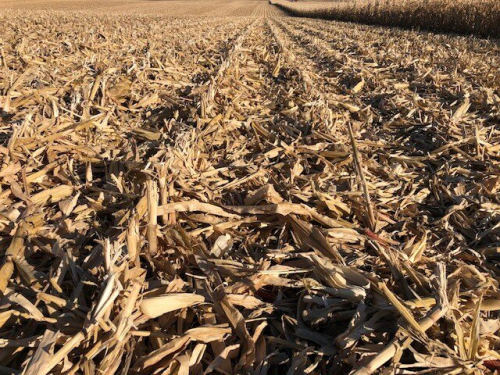 Anhydrous ammonia is injected in a band 6 to 8 inches deep. Once in the soil, it picks up a hydrogen from water becoming ammonium (NH4+) which is attracted to the negative charge of the soil cation exchange holding it like a magnet until the soil warms up enough to cause further biological changes which allow the nitrogen to become available for crop uptake. Understanding soil biology and chemistry is an important thing in plant nutrition.
Anhydrous ammonia is injected in a band 6 to 8 inches deep. Once in the soil, it picks up a hydrogen from water becoming ammonium (NH4+) which is attracted to the negative charge of the soil cation exchange holding it like a magnet until the soil warms up enough to cause further biological changes which allow the nitrogen to become available for crop uptake. Understanding soil biology and chemistry is an important thing in plant nutrition.
At winter farm meetings there are often presentations about the 4-Rs. Right source of fertilizer, Right rate of fertilizer, Right time of application, Right placement. The crop input supply chain is quite aware of public concerns regarding off-farm movement of nutrients and potential impacts on water quality.
Stuff isn’t just tossed out there. We keep getting better and more efficient. Crop yield per pound of applied nitrogen is probably 50% higher than when I started farming. That is, my nitrogen rate plan isn’t much higher than in the 1980s while it’s common to find grain yields 50% higher than we had back then. We are putting a lot of roots and biomass back into and onto the soil as well.
Please note, by clicking the links you will be leaving a partially funded checkoff site.Top of Form
What’s somewhat funny is that as I took a break from writing, I stumbled into an article from The Spectator called “We’ve just had the best decade in human history. Seriously.” It highlights how much more efficient the world has been getting on several fronts. One of the reasons I am not fearful of ecological collapse or our ability to feed potentially 9 billion people in the coming decades is humanity is getting better at things.
Of course, for farmers, the weather is always top-of-mind. Many of us over the past few decades have listened to Elwynn Taylor, a climatologist emeritus at Iowa State University, talk about weather and risk. His presentation is never boring. Probably 20 years ago he talked about the potential for a significant drought in the decade of the 2020s. It seemed far off back then, but here we are. This article from a regional farm paper I enjoy gives a perspective on Elwynn Taylor’s thoughts. I like how he uses the term climate drifting. Things weather and climate related have moved around this planet for thousands of years.
One of the things that hasn’t changed over the course of farming is cleaning up harvest equipment. That job just isn’t much fun. But, if you don’t do it, mice and rats will make you pay greatly in damage to electrical harnesses, smells that won’t go away (not what you want in the operator cab), and shop bills from technician hours trying to diagnose why the machine won’t run right or at all.
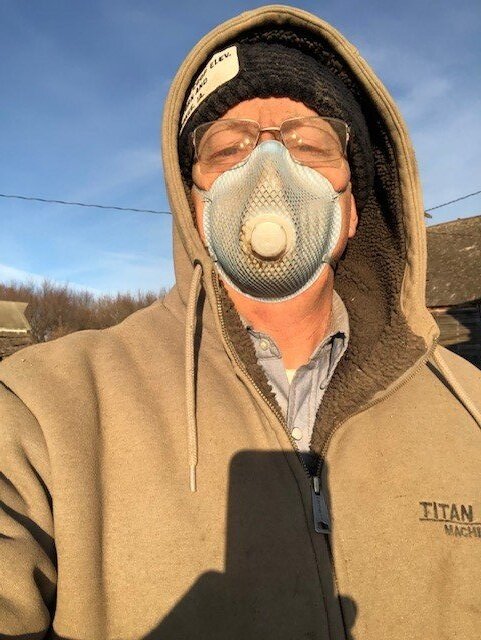 It’s hard to describe the type of dirt that finds its way into various nooks and crannies on a combine. It’s a bit like the fluffiness of sawdust with the grittiness of road gravel dust and the softness of a two-day-old beard. Toss in some muck from mud, oil and grease from machine lubricants, and a bit of glue from operating in rain and snow all tangled with what looks like a shredded shoelace, ground-up leaves and grain and you might come close.
It’s hard to describe the type of dirt that finds its way into various nooks and crannies on a combine. It’s a bit like the fluffiness of sawdust with the grittiness of road gravel dust and the softness of a two-day-old beard. Toss in some muck from mud, oil and grease from machine lubricants, and a bit of glue from operating in rain and snow all tangled with what looks like a shredded shoelace, ground-up leaves and grain and you might come close.
Many farmers will say “you run it, you clean it” in regards to the combine. This makes sense from a character-building perspective. Farm kids spend a lot of hours in combine cabs riding with family as modern machines have quite large operator cabs with extra seating. The desire to “run the combine” kicks in early. However, though a young one might be big enough to operate the machine, clean-up waiting at the end helps moderate the exuberance. It’s just a nasty job.
My corn and soybean heads, which are exchangeable heads that mount on front to cut and gather the crop and feed it into the combine, are cleaned up and put away. I haven’t yet gotten to the main unit as it’s a big outdoor job and good outdoor days haven’t been easy to find this fall. You want a breeze to blow the dirt away as you are cleaning it. The recent shot of warm weather has helped me get the main machine opened, shields and covers off, and most of the debris blown off. It’s a job where you think you have an area clean, move the blowgun and get a blast of dirt in your face from a pile lurking out of sight.
I don’t power wash my combine in the fall. There is a school of thought that you risk driving moisture into wiring connectors and bearings risking corrosion as the machine will be sitting cold and damp for months. The following photos show some of the dust and dirt that has to be cleaned up to reduce the chance of rodents moving in.
As I write this, I only have about an hour of vacuuming out the cab, grain tank, and some augers to get the last of the grain. I’ll then toss some mothball bags in various places to deter rodents. Apparently they don’t like the smell. Some farmers use floral or highly scented dryer sheets for this purpose as well. Gosh, I don’t know if farmers have asked Heloise for her thoughts on this type of housekeeping!
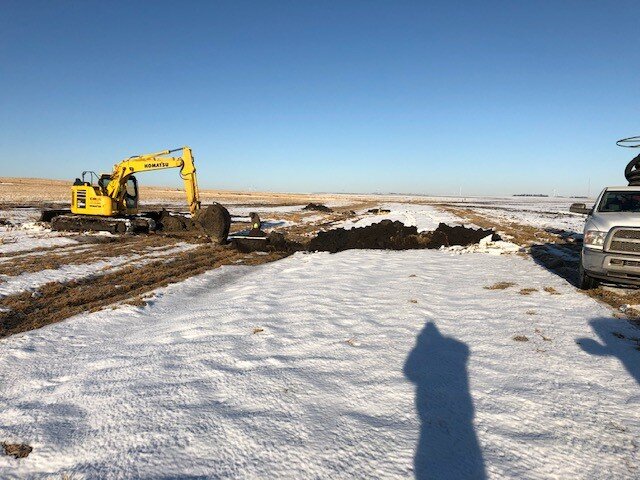
Since Thanksgiving, the tile contractor I use has fixed some blowouts (excess rain overloads drainage causing excess pressure which can cause holes that need to be repaired). It’s been hard to find days when it was fit to dig and work with water. They got it squeezed in. I didn’t want to start 2020 with water running across the top of the ground…. that’s a mess.
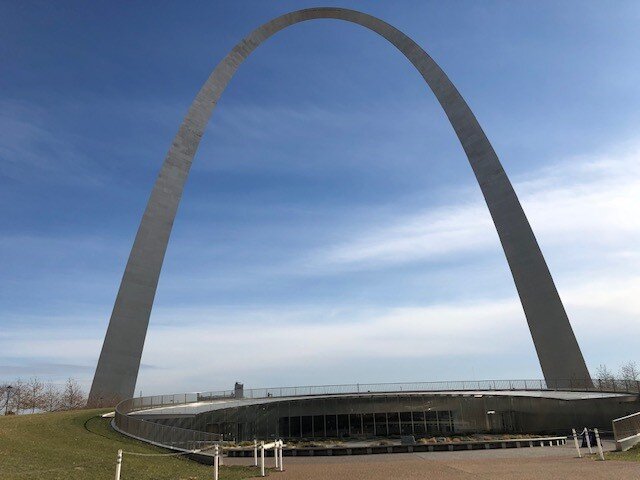 On the soybean front, a couple weeks ago I was re-elected to serve on the executive committee of the United Soybean Board. With that, I will again chair the Supply Action Team. The best way to sum up what we do is set priorities and make decisions regarding funding (farmer checkoff dollars) for research to both grow soybeans more efficiently and more sustainably, and projects to grow soybeans with higher consumer demand or better quality out of the field. The work products of this team are quite soybean-farmer focused. Other teams look to build markets, which is more end-user focused. It’s a leadership position that fits my abilities about right.
On the soybean front, a couple weeks ago I was re-elected to serve on the executive committee of the United Soybean Board. With that, I will again chair the Supply Action Team. The best way to sum up what we do is set priorities and make decisions regarding funding (farmer checkoff dollars) for research to both grow soybeans more efficiently and more sustainably, and projects to grow soybeans with higher consumer demand or better quality out of the field. The work products of this team are quite soybean-farmer focused. Other teams look to build markets, which is more end-user focused. It’s a leadership position that fits my abilities about right.
Well, it’s about time I wrap this up. One of the challenges I have been having with this issue has been “What to say, what to close with?”
The notion of staircase wit (or wisdom) has been on my mind. Next month, when you begin following someone new, what might I wish I had said during these past few months or throughout the year? When I accepted the challenge to write this monthly journal - my most feared college courses revolved around creative writing, so more than once it was a major panic trying to write something – I knew this was a bit of a stretch for me.
I’ve never kept a journal or diary so each monthly issue was generated off the top of my head. I seldom knew where it was going to go when I’d start thinking about pounding it out.
And who knew what the year would bring. It’s hard to believe all the things that happened and I shared with you along the way…. the weather challenges, the passing of my mom, the accidental death of my good friend Dean Coleman, a crop that came out OK even with the challenges, windmills on our western horizon, and turning 60 just to name a few things.
So as this decade closes out and I put this last issue to bed on the winter solstice with the sun rising late in the southeast and setting early in the southwest, I sincerely hope you enjoyed the minutes you spent reading along. I hope you learned a bit about farming from one farmer’s perspective.
I enjoy agriculture so very much. It is a wonderful place for a curious mind. I have no doubt the future is bright so long as people are free to find ways to continually improve how things are done. I have no doubt believing autonomous vehicles will become a part of agriculture, that robots will help us do an even better and more creative job of farming. That the food system will be even more efficient, diverse and safe for more people around the globe. That agriculture will be part of the solution to environmental concerns and issues. My heart and mind race as I think about the possibilities.
May we all have great days in the future.
All our best,
Tom and Susanne Oswald
On the soybean front, a couple weeks ago I was re-elected to serve on the executive committee of the United Soybean Board. With that, I will again chair the Supply Action Team. The best way to sum up what we do is set priorities and make decisions regarding funding (farmer checkoff dollars) for research to both grow soybeans more efficiently and more sustainably, and projects to grow soybeans with higher consumer demand or better quality out of the field. The work products of this team are quite soybean-farmer focused. Other teams look to build markets, which is more end-user focused. It’s a leadership position that fits my abilities about right. Well, it’s about time I wrap this up. One of the challenges I have been having with this issue has been “What to say, what to close with?” The notion of staircase wit (or wisdom) has been on my mind. Next month, when you begin following someone new, what might I wish I had said during these past few months or throughout the year? When I accepted the challenge to write this monthly journal - my most feared college courses revolved around creative writing, so more than once it was a major panic trying to write something – I knew this was a bit of a stretch for me. I’ve never kept a journal or diary so each monthly issue was generated off the top of my head. I seldom knew where it was going to go when I’d start thinking about pounding it out. And who knew what the year would bring. It’s hard to believe all the things that happened and I shared with you along the way…. the weather challenges, the passing of my mom, the accidental death of my good friend Dean Coleman, a crop that came out OK even with the challenges, windmills on our western horizon, and turning 60 just to name a few things. So as this decade closes out and I put this last issue to bed on the winter solstice with the sun rising late in the southeast and setting early in the southwest, I sincerely hope you enjoyed the minutes you spent reading along. I hope you learned a bit about farming from one farmer’s perspective. I enjoy agriculture so very much. It is a wonderful place for a curious mind. I have no doubt the future is bright so long as people are free to find ways to continually improve how things are done. I have no doubt believing autonomous vehicles will become a part of agriculture, that robots will help us do an even better and more creative job of farming. That the food system will be even more efficient, diverse and safe for more people around the globe. That agriculture will be part of the solution to environmental concerns and issues. My heart and mind race as I think about the possibilities. May we all have great days in the future. All our best, Tom and Susanne Oswald
On the soybean front, a couple weeks ago I was re-elected to serve on the executive committee of the United Soybean Board. With that, I will again chair the Supply Action Team. The best way to sum up what we do is set priorities and make decisions regarding funding (farmer checkoff dollars) for research to both grow soybeans more efficiently and more sustainably, and projects to grow soybeans with higher consumer demand or better quality out of the field. The work products of this team are quite soybean-farmer focused. Other teams look to build markets, which is more end-user focused. It’s a leadership position that fits my abilities about right. Well, it’s about time I wrap this up. One of the challenges I have been having with this issue has been “What to say, what to close with?” The notion of staircase wit (or wisdom) has been on my mind. Next month, when you begin following someone new, what might I wish I had said during these past few months or throughout the year? When I accepted the challenge to write this monthly journal - my most feared college courses revolved around creative writing, so more than once it was a major panic trying to write something – I knew this was a bit of a stretch for me. I’ve never kept a journal or diary so each monthly issue was generated off the top of my head. I seldom knew where it was going to go when I’d start thinking about pounding it out. And who knew what the year would bring. It’s hard to believe all the things that happened and I shared with you along the way…. the weather challenges, the passing of my mom, the accidental death of my good friend Dean Coleman, a crop that came out OK even with the challenges, windmills on our western horizon, and turning 60 just to name a few things. So as this decade closes out and I put this last issue to bed on the winter solstice with the sun rising late in the southeast and setting early in the southwest, I sincerely hope you enjoyed the minutes you spent reading along. I hope you learned a bit about farming from one farmer’s perspective. I enjoy agriculture so very much. It is a wonderful place for a curious mind. I have no doubt the future is bright so long as people are free to find ways to continually improve how things are done. I have no doubt believing autonomous vehicles will become a part of agriculture, that robots will help us do an even better and more creative job of farming. That the food system will be even more efficient, diverse and safe for more people around the globe. That agriculture will be part of the solution to environmental concerns and issues. My heart and mind race as I think about the possibilities. May we all have great days in the future. All our best, Tom and Susanne Oswald
Rotor cage is where the threshing and separation of grain occurs. Photo credit: Tom Oswald
A handful of soybean fuzz I cleaned out. It is as itchy and scratchy as it looks. Photo credit: Tom Oswald
A pocket of grain and dirt to be blown out. Mice just love stuff like this. Photo credit: Tom Oswald